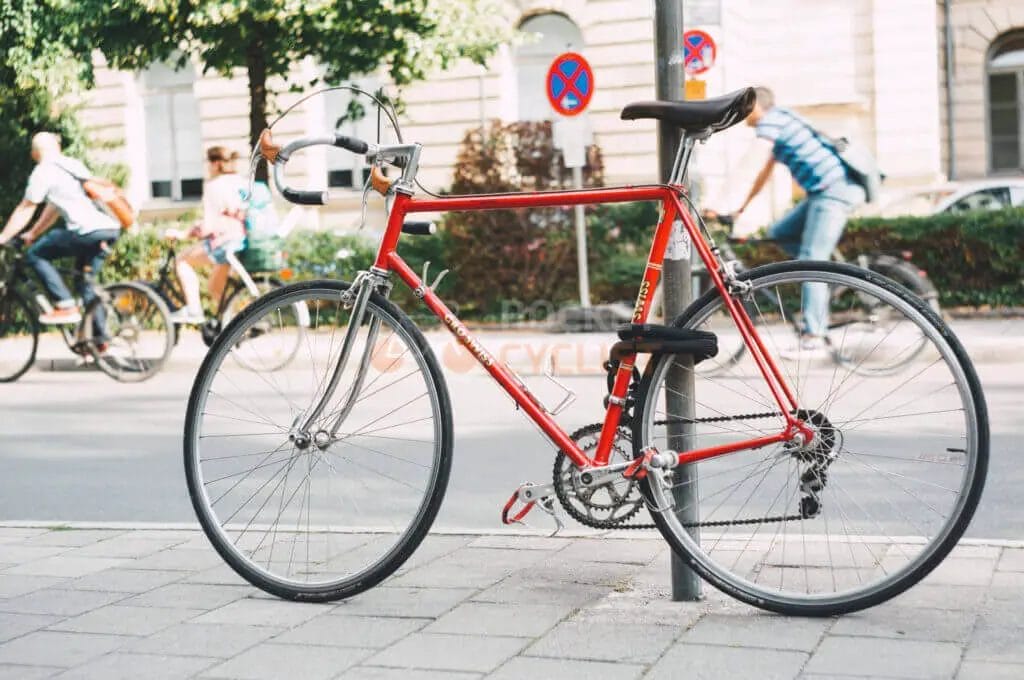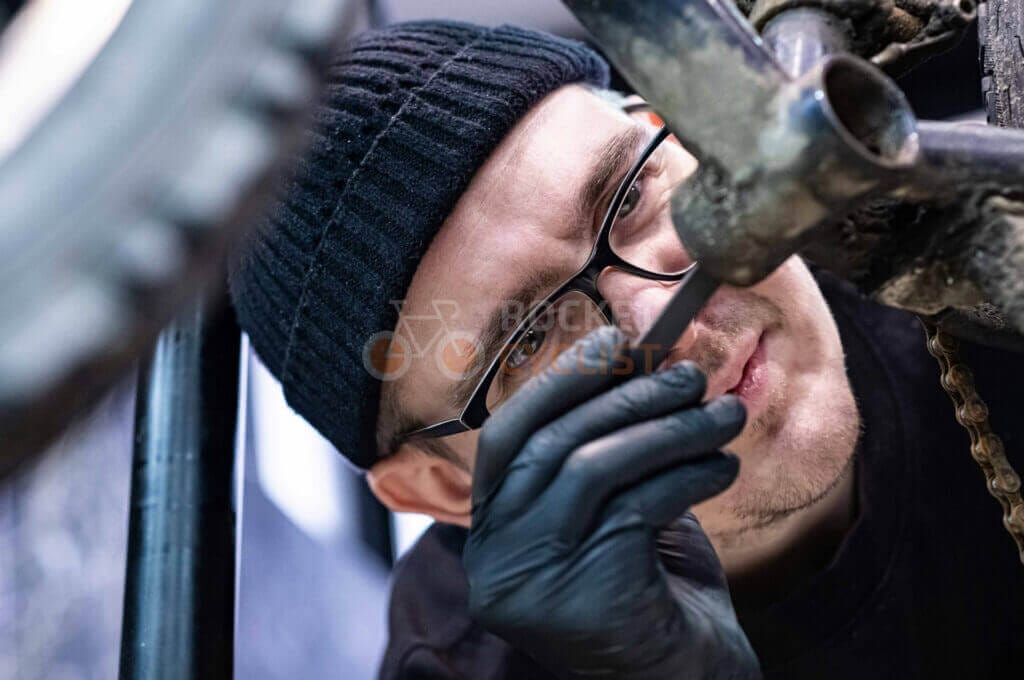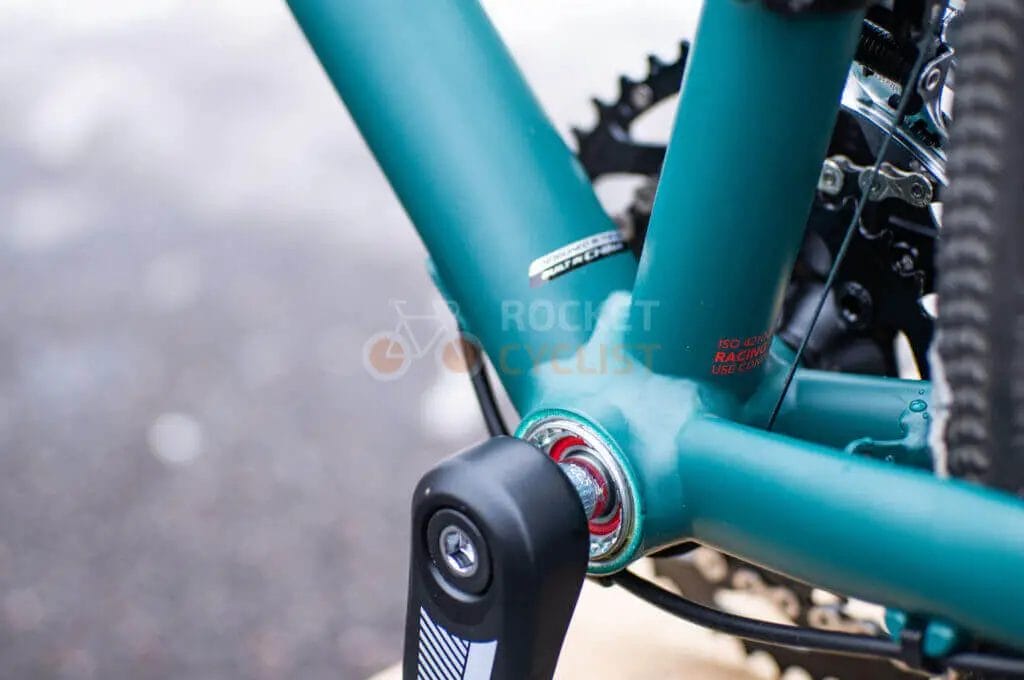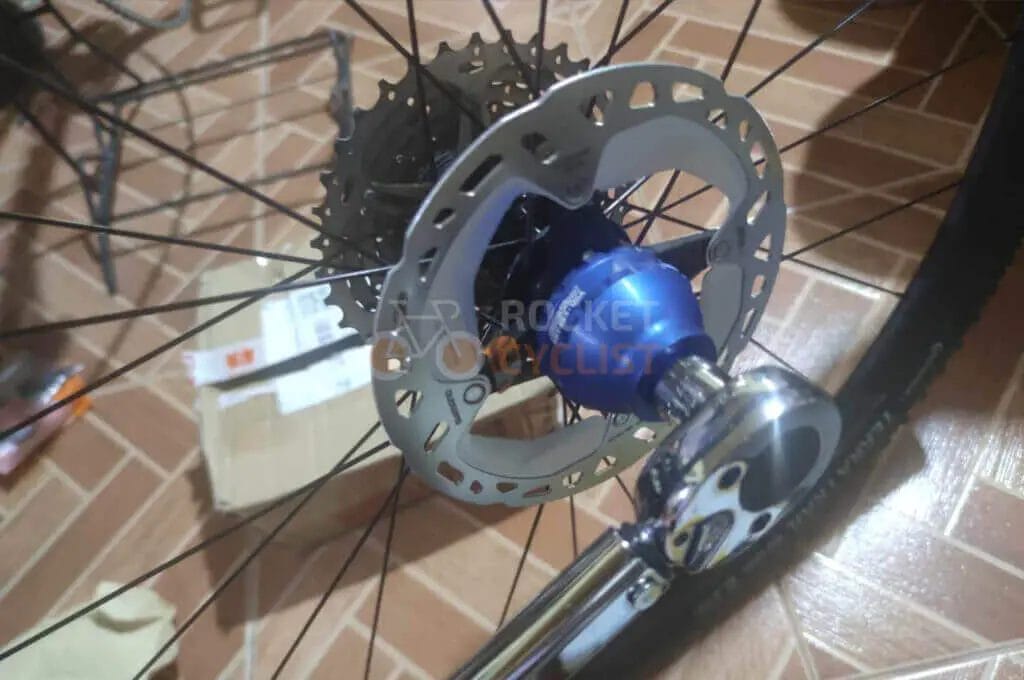Last Updated on March 24, 2024 by Vinson Lozano

As a cyclist, you understand that the bottom bracket is the heart of your bike. It’s crucial, as an integral component where your crankset attaches to the bike, and it determines the motion of your pedaling. Bottom bracket are generally made to last, but how long is too long and how do you know when to replace it?
Importance of a Bottom Bracket in a Bicycle
The bottom bracket plays a pivotal role in your bicycle’s performance, even though it might not get as much attention as other parts. In essence, it’s a set of bearings that allows the crank arms to rotate smoothly. Everything from the effortless gliding down streets to the relentless uphill climbs, the bottom bracket significantly impacts your ride’s comfort and efficiency.
Factors Affecting the Lifespan of a Bottom Bracket
It’s hard to provide a definite answer to how long a bottom bracket lasts due to varied factors that affect its lifespan. Here are a few things to consider:
- Type of Bottom Bracket: Higher quality, more expensive bottom brackets should, in theory, last longer provided that they get the required care.
- The Terrain: Consistent rides on rough terrains can wear out the bottom bracket faster.
- Environment: Exposure to elements such as water and dirt significantly reduce the lifespan of bearings.
- Riding Style: Aggressive riders or those who push big gears might go through bottom brackets quicker due to the extra stress incurred.
- Maintenance: Regular cleaning, proper installation, and replacement when necessary, all contribute to the longevity of the bottom bracket.
Here’s a quick table underline factors affecting the lifespan of a bottom bracket:
| Factors | Explanation |
|---|---|
| Type of Bottom Bracket | Higher quality, more expensive bottom brackets generally last longer with proper maintenance. |
| Terrain | Constant rides on rough terrains can accelerate the wear and tear of the bottom bracket. |
| Environment | Elements such as dirt and water can significantly reduce the lifespan of bearings in a bottom bracket. |
| Riding Style | Aggressive riding style can stress the bottom bracket, causing it to wear out quicker. |
| Maintenance | Regular cleaning, correct installation, and timely replacement contribute to the longevity of the bottom bracket. |
In essence, the lifespan of a bottom bracket depends on a range of variables, with good maintenance being key to ensuring it lasts as long as possible.
Signs of a Worn Out Bottom Bracket

As an ardent cycling enthusiast, you might sometimes overlook the health of a key component of your bicycle – the bottom bracket. However, being aware of its condition can dramatically improve your cycling experience. So, let’s look at some of the telltale signs that indicate it’s time for a bottom bracket replacement.
Unusual Noises and Vibrations
First off, listen to your bike! If you start hearing mysterious clicking, grinding or creaking sounds coming from the bottom of your cycle, that’s your bike crying out for help. These odd noises and peculiar vibrations aren’t normal, and they’re typically the clearest sign that your bottom bracket isn’t functioning as it should.
Difficulty in Pedaling Smoothly
Next, pay attention to any changes in your pedaling. If your pedals aren’t turning as smoothly as they used to or they’re giving off a gritty feel, it’s likely that your bottom bracket is on its last legs. The normal resistance while cycling ought to be smooth and consistent. If not, it could indicate an issue with unwanted friction in the bracket.
Excessive Wobbling or Play in the Crankset
Lastly, check for any abnormal movements. Any excessive wobbling or play in the crankset is a cause for concern. Give your bike’s cranks a firm shake from side to side; any noticeable movement could mean your bottom bracket is worn out and needs changing as soon as possible.
In conclusion, the longevity of a bottom bracket varies greatly, and depends on factors like quality, maintenance, and the conditions it’s exposed to. But with these telltale signs, you won’t be caught off guard when it’s time to replace it. After all, a happy bottom bracket means a smoother and more efficient ride for you.
Factors Affecting the Lifespan of a Bottom Bracket
Here’s the scoop – the lifespan of a bottom bracket can vastly vary based on several factors. Let’s delve into three crucial aspects that play a significant role in determining its longevity.
Quality and Material of the Bottom Bracket
Always remember, not all bottom brackets are created equal. The type of material used in the construction, combined with the overall quality of the bracket, can dramatically impact its life cycle. Typically, bottom brackets crafted from high-quality materials such as stainless steel or ceramic tend to outlast their cheaper counterparts. Hence, investing in a high-grade bottom bracket might give you a solid return in terms of extended lifespan and reliable performance.
Riding Conditions and Frequency
The more often you hit the road (or trails), the shorter your bottom bracket’s lifespan will be. The type of terrain you traverse also has a significant effect on wear and tear. Rough riding conditions such as muddy or wet trails can potentially lead your bottom bracket to degrade prematurely, compared to smooth and maintained city streets.
Maintenance and Cleaning Practices

Stellar maintenance practices can drastically increase the lifespan of your bottom bracket. That means regular cleaning to remove dirt and debris, coupled with routine lubrication to keep it running smoothly. Neglecting to keep on top of your bike’s upkeep could inadvertently shorten the life of your bottom bracket – and you wouldn’t want that!
Here’s a concise table to illustrate the key points:
| Factors Affecting the Lifespan | Explanation |
|---|---|
| Quality and Material | High-quality materials such as stainless steel or ceramic tend to have a longer lifespan. |
| Riding Conditions and Frequency | More frequent riding and harsh conditions can lead to increased wear and tear. |
| Maintenance and Cleaning Practices | Regular cleaning and maintenance can help preserve the lifespan of your bottom bracket. |
Average Lifespan of Different Bottom Bracket Types

When you’re cruising down the road or hitting the trails on your bike, it’s easy to overlook the little mechanics that make it all possible. One such component is the bottom bracket, a critical piece of your bike’s drivetrain. The lifespan of bottom brackets varies greatly depending on their type and general use.
Cartridge Bottom Brackets
Cartridge bottom brackets are typically more affordable and widely used. From urban commuters to cross-country riders, this is the go-to for many cyclists.
1. Sealed vs. Non-Sealed Bearings
Cartridges can have either sealed or non-sealed bearings. Sealed bearings are protected from dirt and water, and hence, they tend to last longer. On the other hand, non-sealed bearings require more regular maintenance but provide the advantage of being serviceable.
2. Expected Lifespan and Replacement Interval
Regular use would typically witness a lifespan of 5,000 to 10,000 miles. However, harsh conditions or heavy use may shorten this.
External Bottom Brackets
External brackets are favorites among professional cyclists and enthusiasts for their higher performance factor.
1. Threaded vs. Press-Fit Designs
When it comes to these, you can opt for either threaded or press-fit designs. Threaded brackets have longer lifespans due to their resistance to creaking, while press-fit brackets are lighter and provide smoother crank operation.
2. Longevity and Maintenance Tips
The typical lifespan of an external bracket is around 15,000 – 20,000 miles with good care. Ensure it’s cleaned regularly, and grease applied during installation for enhanced performance.
Press-Fit Bottom Brackets
For those opting for cutting-edge design and minimal weight, the press-fit bottom bracket should be an attractive option.
1. Challenges and Common Issues
The most common issue is the creaking caused by the bearings moving in their housings. This could potentially decrease the lifespan of the bottom bracket.
2. Lifespan Variations among Different Brands
Different manufacturers can boast different lifespans, ranging from 5,000 to even 50,000 miles. Therefore, it’s worth researching before making a purchase. Remember, the key to a long-lasting bottom bracket is regular cleaning and proper installation.
Extending the Lifespan of Your Bottom Bracket

Let’s admit it, you love cycling. How the wind hits your face, the adrenaline rush, and the feeling of freedom it brings. However, maintaining your bicycle, especially the bottom bracket, can be a challenging task. How long does your bottom bracket last?
The bottom bracket is crucial in the operating efficacy of your bicycle, and it can last a long time depending on various factors such as frequency of use, maintenance schedule, and riding conditions.
Regular Cleaning and Lubrication
True, it can be laborious or time-consuming for you, but performing regular cleaning is the key to prolonging your bottom bracket’s lifespan. Accumulated dirt and grit can cause premature wear, impacting its longevity negatively. But with frequent clean-ups and lubrication, you can expect smooth rides and a longer-lasting bracket.
Proper Installation and Torque

Incorrect installation might jeopardize your bottom bracket’s lifespan. Laying the groundwork in setting up your bottom bracket correctly, ensuring it’s well torqued and aligned is a significant step to extending its lifespan.
Avoiding Excessive Dirt and Moisture
Avoid this common pitfall. You love cycling through muddy patches or a rainy day, but bear in mind, these extreme conditions expose the bottom bracket to excessive dirt and moisture. These can get lodged into the bracket’s crevices, causing harm over time. Strive to dodge these as much as possible.
The lifespan of your bottom bracket lies in your hands. With proper care, regular cleaning, correct installation, and avoiding extreme conditions, you’re paving the way for numerous smooth rides ahead.
| Key Factors | Importance |
|---|---|
| Regular Cleaning and Lubrication | Regular cleaning and lubrication prevents buildup of dirt and grit, extending the lifespan of the bottom bracket. |
| Proper installation and Torque | Ensuring the bottom bracket is correctly installed, well-torqued and aligned contributes positively to its longevity. |
| Avoiding Excessive Dirt and Moisture | Extreme riding conditions expose the bottom bracket to harmful elements, which can reduce its lifespan. Prevent this by avoiding such conditions. |


